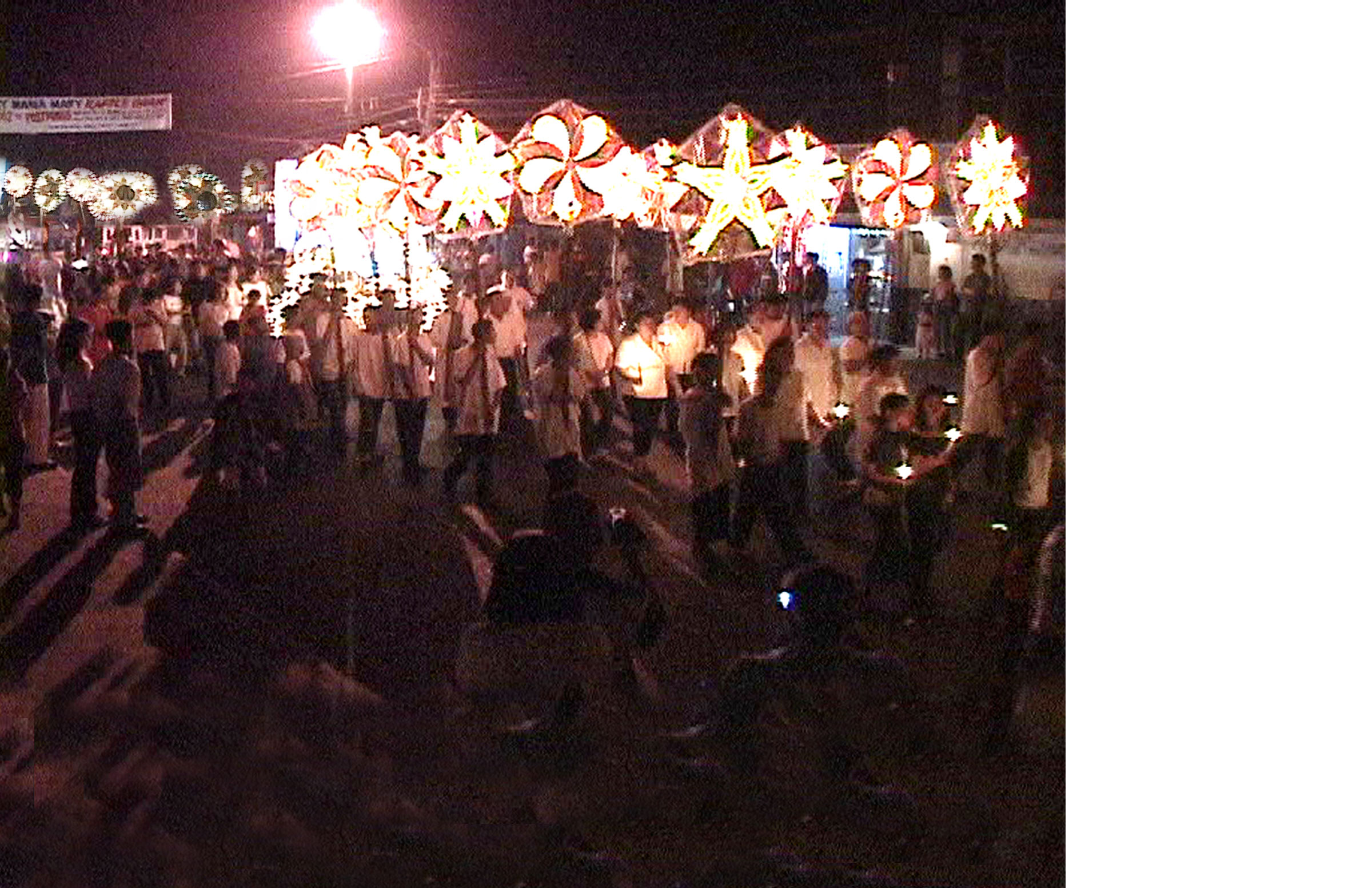Vanishing Folk Festivals: Lubenas

Where it still survives: Mabalacat, Magalang, Angeles, San Fernando, Mexico, Concepcion, Capas
When it occurs: Nine evenings before Christmas (December 16-24), the same period for simbang bengi (dawn Masses); lubenas is the corruption of novena, meaning “nine”
What it is: It is a procession on land (limbun, to differentiate it from libad which is a procession on water) where two rows of lanterns mounted on bamboo poles accompany the undas (shoulder-borne carriage) or carroza (wheeled carriage) bearing the patron saint’s image. The lanterns, five to seven of them on each row, are carried by boys or men, sometimes women; except in Mexico where only one row of lanterns precede the santo. (The number of lanterns depends on what the barangay can afford.)
At the head of the procession is a lantern in the shape of a cross, and behind it is another lantern in the shape of a fish, with movable fins, mouth and tail. Right behind the santo is a solitary lantern that is larger than the rest.
All the lanterns in a lubenas are made of paper and bamboo frames and are illuminated from within, either by candlelight or electric light. (Today, it is only Brgys. Cutcut and San Jose in Angeles City that still include the fish lantern; only one man, 70-year-old Eulogio Catahan or Apung Eloy of Cutcut still makes fish lanterns, and only one household, in Brgy. San Nicolas, still makes the peculiar white lanterns of Angeles, quite different from the multi-colored lanterns of San Fernando.)

Angeles lanterns have tails while Mabalacat lanterns generally are tailless. Marching behind the carroza is the local choir singing “Dios te Salve,” usually accompanied by a brass band or a lone guitarist. According to historian Mariano Henson, the two most popular versions of “Dios te Salve” were arranged by Prof. Higino Herrera and Prof. Antonio G. Dizon.
In Mexico town, the singers pause at intervals to pray the rosary. This practice is probably a vestige from the Spanish times when Kapampangans had a peculiar way of doing a procession: they stopped at certain points to watch the reenactment of the life of whoever saint was being honored in the procession.
From December 16 to December 24, the town’s barangays hold simultaneous lantern processions in their respective areas; on Christmas Eve, right before the Midnight Mass, lantern processions from these barangays converge in the church patio, creating a wonderland of hundreds of lanterns of various shapes and colors. This event is called maitinis (probably from the word matins).
How it began: Henson said the tradition started (or was already existing) when the town of Angeles first celebrated the La Naval fiesta in October, 1830. But the practice of lighting paper lanterns for religious festivals, which is common among Far East countries, probably originated in Bacolor, site of the first La Naval celebrations (held in November) in Pampanga. Because of the proximity of the La Naval to Christmas, the same lanterns used to line the dalan paglimbunan (designated procession route, usually the main streets surrounding the church) were most likely retained for the Christmas season.
What it means: The lubenas shows the Kapampangan tendency to do everything in excess: one suffering of having to wake up in the wee hours to attend the nine consecutive simbang bengi (dawn Masses) is obviously not enough penitence for Kapampangans to prepare their souls for Christmas, they also must add another suffering, i.e., staying up late the night before to attend a procession that requires them to walk great distances. But Kapampangans camouflage their suffering beautifully with yet another manifestation of excess: instead of just using candles to light their procession, they have to hoist multi-colored lanterns which are illuminated from within.
What the future holds: In general, fewer people join processions because the Church since Vatican II has underemphasized the importance of such para-liturgical practices, and also because heavy traffic has made processions inconvenient and even risky. In Angeles, only about five barangays still hold the lubenas; in Mabalacat, only 14 out of 27 barangays; the same number do it in Mexico. In Angeles, the maitinis has been transferred from the church patio to the Museo nang Angeles grounds and starting last year to the parking lot of Nepo Mall.
Organizers have transformed the tradition into an inter-barangay competition, with cash prizes to boot, as an incentive to revive interest in it. This is another example of a folk tradition that has served the Church so long and so well during its struggling years, but now that it’s become anachronistic, is gradually being eased out and therefore is left with no choice but to turn to that other great structure in the community, the Mall.
Parish pastoral councils should reclaim this gem of a tradition and use it for the reason it was originally intended: to bring people back to church like moths being lured to the light. Holding it in secular settings diffuses its religious significance, and artificially propping it up by turning it into a contest cheapens its spirit.
